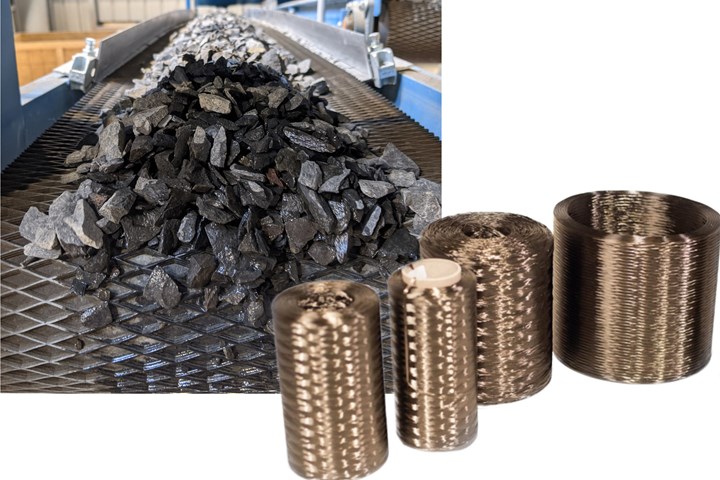Mafic USA expects to double U.S. basalt fiber production capacity
Company recently completed its first year of operations in Shelby, North Carolina, and plans for a continued increase in basalt fiber adoption and growth.

Photo Credit: Mafic USA
Mafic USA (Shelby, N.C., U.S.) has announced plans to double production capacity at its continuous basalt fiber manufacturing facility in Shelby, N.C. The facility, according to the company, is already said to be the world’s largest producer of basalt fiber and is the first of its kind in North America. Mafic USA says the additional capacity is necessary to meet increasing demand and is projected to be online before the end of 2021.
The company celebrated its first anniversary of operations in the U.S. in June 2020. “To be sure, this was a challenging time to begin operations,” says CEO Mike Levine. “The world was four months into the pandemic, and there was tremendous economic uncertainty. One year later, however, we are producing the world’s highest quality basalt fiber for customers across a diverse range of industries.”
Basalt fiber is a drawn continuous fiber similar to fiberglass and carbon or aramid fibers. To produce the fiber, mined basalt rock is washed and placed into a furnace at approximately 1500°C. The resulting melt is extruded through a “bushing,” a precious metal block with thousands of microscopic holes that each produce a single filament. Upon leaving the bushing, the fiber filament hardens, and a sizing is applied to improve its properties before the fiber filaments are wound with other finished fibers into a strand.
According to Mafic USA, basalt fiber provides superior mechanical properties, such as improved tensile, flexural and impact properties (see “The still-promised potential of basalt fiber composites”). Further, it is a more environmentally sustainable product for companies seeking to reduce a carbon footprint. The manufacture of basalt fiber produces virtually no emissions due to low fusion loss, yielding a 50% reduction in emissions compared to traditional glass fibers.
“It’s exciting to watch the rapid adoption and growth of our unique product,” adds Levine. “As we move into our second year of production, we want to thank our customers, employees and shareholders, as well key partners such as Live Oak Bank and the U.S. Department of Agriculture, which have provided critical financing and support.”
Related Content
-
JEC World 2022, Part 2: Recycling, natural fibers and additive manufacturing
CW associate editor Hannah Mason recaps several technologies seen on display at JEC World 2022, including new developments from Bcomp, Massivit 3D, Gen 2 Carbon and more.
-
Robotized system makes overmolding mobile, flexible
Anybrid’s ROBIN demonstrates inline/offline functionalization of profiles, 3D-printed panels and bio-based materials for more efficient, sustainable composite parts.
-
BMW unveils new M4 GT4 race car, features most natural fiber parts for GT series to date
Bcomp ampliTex and powerRibs technologies make up bodywork components such as the hood, front splitter, doors, trunk and rear wing and several interior components, taking next steps for future production models.
















